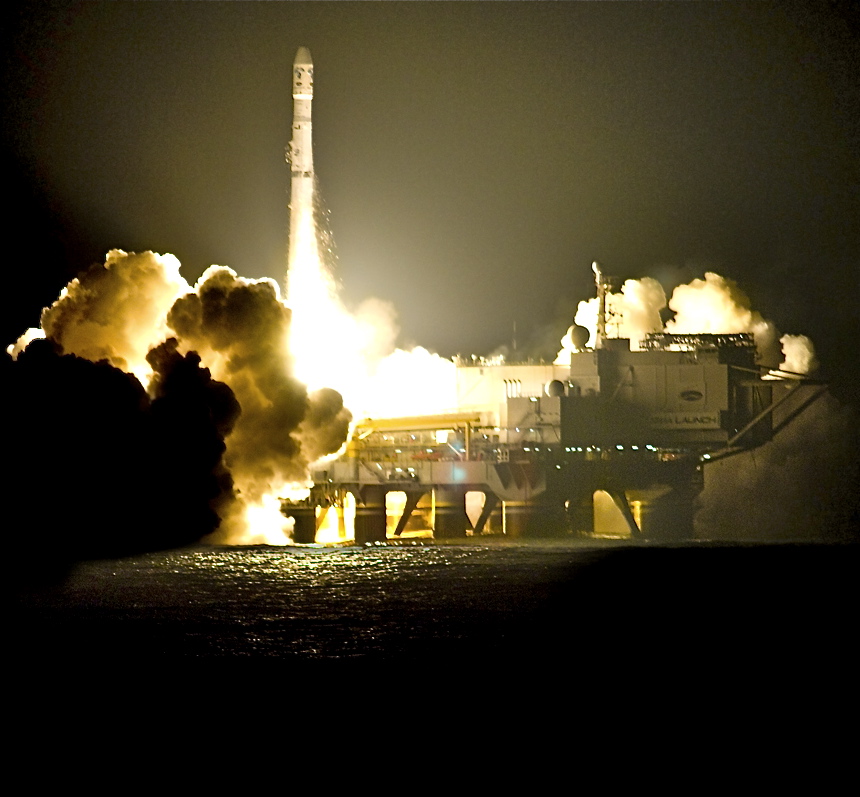|
DDishTV LLC
DDISHTV ( mn, ДДэшТВ ХХК) is a Mongolian Direct-to-home television service provider company led by Bars Ganbold ( CEO). A member of the Asia-Pacific Broadcasting Union, DDISHTV was established in 2008 to carry out Mongolian government's proposal to broadcast more television channels in the countryside in high quality. It has officially started broadcasting in June 2008. Background Previously people outside of bigger cities in Mongolia were able to view only four national TV channels due to outdated C-Band system with analog technology which requires big antenna. DDISH began to work as first and unique operator with more TV channels to the consumers across the country through latest Ku-Band technology which allows small dishes. Coverage area As of February 2017, DDISH broadcast across Mongolia for over 300,000 customers, though the reception is also available in foreign countries, such as Russia and China. The service operates on Koreasat 5A satellite, formerly was on ... [...More Info...] [...Related Items...] OR: [Wikipedia] [Google] [Baidu] |
Satellite Television
Satellite television is a service that delivers television programming to viewers by relaying it from a communications satellite orbiting the Earth directly to the viewer's location. The signals are received via an outdoor parabolic antenna commonly referred to as a satellite dish and a low-noise block downconverter. A satellite receiver then decodes the desired television program for viewing on a television set. Receivers can be external set-top boxes, or a built-in television tuner. Satellite television provides a wide range of channels and services. It is usually the only television available in many remote geographic areas without terrestrial television or cable television service. Modern systems signals are relayed from a communications satellite on the X band (8–12 GHz) or Ku band (12–18 GHz) frequencies requiring only a small dish less than a meter in diameter. The first satellite TV systems were an obsolete type now known as television receive-only ... [...More Info...] [...Related Items...] OR: [Wikipedia] [Google] [Baidu] |
Direct-to-home Television
Satellite television is a service that delivers television programming to viewers by relaying it from a communications satellite orbiting the Earth directly to the viewer's location. The signals are received via an outdoor parabolic antenna commonly referred to as a satellite dish and a low-noise block downconverter. A satellite receiver then decodes the desired television program for viewing on a television set. Receivers can be external set-top boxes, or a built-in television tuner. Satellite television provides a wide range of channels and services. It is usually the only television available in many remote geographic areas without terrestrial television or cable television service. Modern systems signals are relayed from a communications satellite on the X band (8–12 GHz) or Ku band (12–18 GHz) frequencies requiring only a small dish less than a meter in diameter. The first satellite TV systems were an obsolete type now known as television receive-only. Th ... [...More Info...] [...Related Items...] OR: [Wikipedia] [Google] [Baidu] |
Asia-Pacific Broadcasting Union
The Asia-Pacific Broadcasting Union (ABU or APBU), formed in 1964, is a non-profit, professional association of broadcasting organisations. It currently has over 287 members in 57 countries and regions, reaching a potential audience of about 3 billion people. The ABU's role is to help the development of broadcasting in the Asia-Pacific region and to promote the collective interests of its members. The ABU covers an area stretching from Turkey in the west to Samoa in the east, and from Mongolia in the north to New Zealand in the south. Its secretariat is located in Angkasapuri, Kuala Lumpur, Malaysia, its secretary-general, currently Dr Javad Mottaghi. One of the ABU's activities is Asiavision, a daily exchange of news feeds by satellite among television stations in 20 countries in Asia. The ABU also negotiates coverage rights to major sports events for its members collectively, and carries out a wide range of activities in the programme and technical areas. The ABU provides ... [...More Info...] [...Related Items...] OR: [Wikipedia] [Google] [Baidu] |
C Band (IEEE)
The C band is a designation by the Institute of Electrical and Electronics Engineers (IEEE) for a portion of the electromagnetic spectrum in the microwave range of frequencies ranging from 4.0 to 8.0 gigahertz (GHz). However, the U.S. Federal Communications Commission C band proceeding and auction, designated 3.7–4.2 GHz as C band. The C band is used for many satellite communications transmissions, some Wi-Fi devices, some cordless telephones, as well as some Radar and weather radar systems. Use in satellite communication The communications C band was the first frequency band that was allocated for commercial telecommunications via satellites. The same frequencies were already in use for terrestrial microwave radio relay chains. Nearly all C-band communication satellites use the band of frequencies from 3.7 to 4.2 GHz for their downlinks, and the band of frequencies from 5.925 to 6.425 GHz for their uplinks. Note that by using the band fr ... [...More Info...] [...Related Items...] OR: [Wikipedia] [Google] [Baidu] |
Ku-Band
The Ku band () is the portion of the electromagnetic spectrum in the microwave range of frequencies from 12 to 18 gigahertz (GHz). The symbol is short for "K-under" (originally german: Kurz-unten), because it is the lower part of the original NATO K band, which was split into three bands (Ku, K, and Ka) because of the presence of the atmospheric water vapor resonance peak at 22.24 GHz, (1.35 cm) which made the center unusable for long range transmission. In radar applications, it ranges from 12 to 18 GHz according to the formal definition of radar frequency band nomenclature in IEEE Standard 521–2002. Ku band is primarily used for satellite communications, most notably the downlink used by direct broadcast satellites to broadcast satellite television, and for specific applications such as NASA's Tracking Data Relay Satellite used for International Space Station (ISS) communications and SpaceX Starlink satellites. Ku band satellites are also used for ... [...More Info...] [...Related Items...] OR: [Wikipedia] [Google] [Baidu] |
Koreasat 5A
Koreasat 5A is a South Korean communications satellite operated by KT SAT, a subsidiary of KT Corporation. On 30 October 2017, it was launched on Falcon 9 ( "Full Thrust" version) rocket A rocket (from it, rocchetto, , bobbin/spool) is a vehicle that uses jet propulsion to accelerate without using the surrounding air. A rocket engine produces thrust by reaction to exhaust expelled at high speed. Rocket engines work entirely f .... References Communications satellites in geostationary orbit Satellites of South Korea Spacecraft launched in 2017 2017 in South Korea Satellites using the Spacebus bus SpaceX commercial payloads {{communications-satellite-stub ... [...More Info...] [...Related Items...] OR: [Wikipedia] [Google] [Baidu] |
Telstar 18
Telstar 18 is a communication satellite in the Telstar series of the Canadian satellite communications company A company, abbreviated as co., is a legal entity representing an association of people, whether natural, legal or a mixture of both, with a specific objective. Company members share a common purpose and unite to achieve specific, declared ... Telesat. References Telstar satellites Spacecraft launched in 2004 2004 in spaceflight 2004 in Canada Satellites using the SSL 1300 bus Spacecraft launched by Zenit and Energia rockets {{communications-satellite-stub ... [...More Info...] [...Related Items...] OR: [Wikipedia] [Google] [Baidu] |
Telstar
Telstar is the name of various communications satellites. The first two Telstar satellites were experimental and nearly identical. Telstar 1 launched on top of a Thor-Delta rocket on July 10, 1962. It successfully relayed through space the first television pictures, telephone calls, and telegraph images, and provided the first live transatlantic television feed. Telstar 2 launched May 7, 1963. Telstar 1 and 2—though no longer functional—still orbit the Earth. Description Belonging to AT&T, the original Telstar was part of a multi-national agreement among AT&T (USA), Bell Telephone Laboratories (USA), NASA (USA), GPO (United Kingdom) and the National PTT (France) to develop experimental satellite communications over the Atlantic Ocean. Bell Labs held a contract with NASA, paying the agency for each launch, independent of success. Six ground stations were built to communicate with Telstar, one each in the US, France, the UK, Canada, West Germany and Italy. The Americ ... [...More Info...] [...Related Items...] OR: [Wikipedia] [Google] [Baidu] |
Sea Launch
Sea Launch was a multinational—Norway, Russia, Ukraine, United States—spacecraft launch company founded in 1995 that provided orbital launch services from 1999–2014. The company used a mobile maritime launch platform for equatorial launches of commercial payloads on specialized Zenit-3SL rockets from a former mobile/floating oil drilling rig renamed ''Odyssey''. By 2014, it had assembled and launched thirty-two rockets, with an additional three failures and one partial failure. All commercial payloads were communications satellites intended for geostationary transfer orbit with such customers as EchoStar, DirecTV, XM Satellite Radio, PanAmSat, and Thuraya. The approach Sea Launch LLC used was to assemble the launcher on a purpose-built ship '' Sea Launch Commander'' in Nimitz Rd., Long Beach, California, USA. The assembled spacecraft was then positioned on top of the self-propelled ''Odyssey'' floating launch platform and moved to the equatorial Pacific Ocean for lau ... [...More Info...] [...Related Items...] OR: [Wikipedia] [Google] [Baidu] |
Television Companies Of Mongolia
Television, sometimes shortened to TV, is a telecommunication medium for transmitting moving images and sound. The term can refer to a television set, or the medium of television transmission. Television is a mass medium for advertising, entertainment, news, and sports. Television became available in crude experimental forms in the late 1920s, but only after several years of further development was the new technology marketed to consumers. After World War II, an improved form of black-and-white television broadcasting became popular in the United Kingdom and the United States, and television sets became commonplace in homes, businesses, and institutions. During the 1950s, television was the primary medium for influencing public opinion.Diggs-Brown, Barbara (2011''Strategic Public Relations: Audience Focused Practice''p. 48 In the mid-1960s, color broadcasting was introduced in the U.S. and most other developed countries. The availability of various types of archival storag ... [...More Info...] [...Related Items...] OR: [Wikipedia] [Google] [Baidu] |
Mass Media Companies Established In 2008
Mass is an intrinsic property of a body. It was traditionally believed to be related to the quantity of matter in a physical body, until the discovery of the atom and particle physics. It was found that different atoms and different elementary particles, theoretically with the same amount of matter, have nonetheless different masses. Mass in modern physics has multiple definitions which are conceptually distinct, but physically equivalent. Mass can be experimentally defined as a measure of the body's inertia, meaning the resistance to acceleration (change of velocity) when a net force is applied. The object's mass also determines the strength of its gravitational attraction to other bodies. The SI base unit of mass is the kilogram (kg). In physics, mass is not the same as weight, even though mass is often determined by measuring the object's weight using a spring scale, rather than balance scale comparing it directly with known masses. An object on the Moon would w ... [...More Info...] [...Related Items...] OR: [Wikipedia] [Google] [Baidu] |






